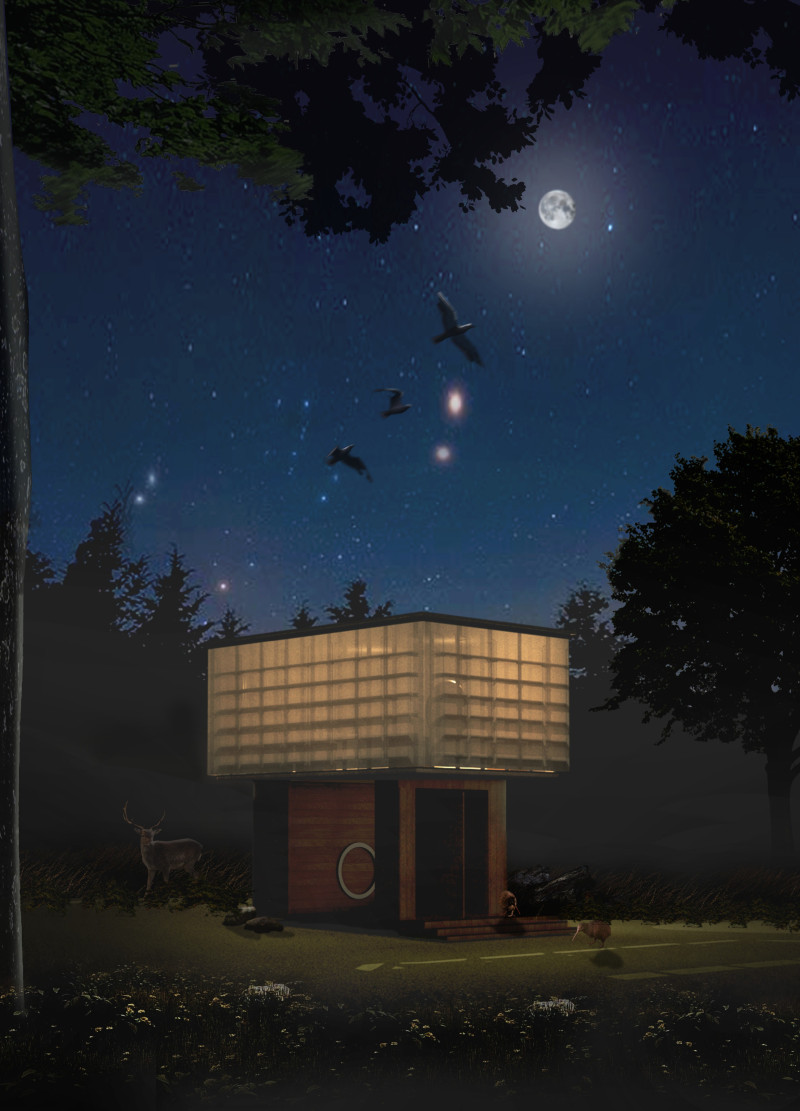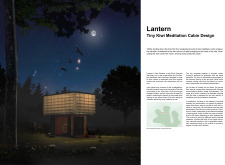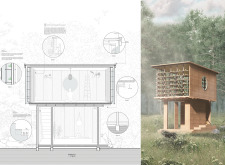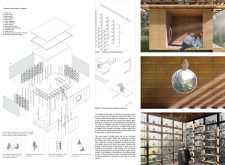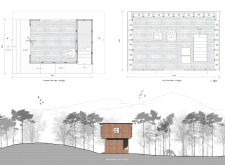5 key facts about this project
The Tiny Kiwi Meditation Cabin is located in the Earth Energies Sanctuary, a serene spot in New Zealand. Its primary purpose is to provide a space for individuals to meditate and connect with nature. The design embodies the concept of a lantern, guiding visitors with its soft light while enhancing their experience in a peaceful setting. This simple yet effective design promotes reflection and tranquility away from daily distractions.
Design Concept
The cabin is thoughtfully placed at the center of the sanctuary, surrounded by tall trees. This location allows it to act as a guiding light, drawing visitors in. The structure focuses on the relationship between the cabin and its natural surroundings. Its layered design emphasizes both openness and protection, making it a safe area for contemplation.
Spatial Organization
The cabin is arranged over two levels, each serving different functions. The ground floor is welcoming, designed for both people and wildlife. It gives a sense of comfort and shelter, encouraging relaxation. In contrast, the upper level is dedicated to meditation and the production of flower essences. This division of space enhances the ability to focus on spiritual practices while maintaining a connection with the environment.
Materiality and Structural Approach
The main construction material is recycled timber, chosen for its sustainability. This decision aligns with the cabin’s purpose of creating a low impact on the environment. The timber structure allows natural light to fill the spaces, creating a warm and inviting atmosphere. The outer layer features a retractable translucent membrane. This membrane offers privacy and lets in light while keeping the feeling of being outside.
Unique Features
Several features encourage interaction with the surrounding nature. The timber grid acts as a framework for growing plants as well as a defining architectural element. This allows for the cultivation of flower essences within the cabin while enhancing the sensory experience for visitors. At night, this setup makes the cabin glow softly, creating a comforting presence in the dark landscape. It becomes a source of warmth, inviting people to step inside and pause for reflection.


